Description
Product Model: SPIET800
Product Brand: ABB
Product Series: IET800 (Symphony Plus)
Product Features:
- Bridges INFI-NET controllers to host computers via TCP/IP over Ethernet, enabling seamless data exchange in legacy and modern DCS environments.
- Supports high-speed communication up to 10/100 Mbps, with robust error-checking for reliable transmission in noisy industrial networks.
- Features plug-and-play integration with Symphony Plus systems, requiring separate license key for full activation and scalability.
- Operates in harsh conditions with wide temperature tolerance (-20°C to 60°C), ensuring uptime in power plants and manufacturing floors.
Steam curls from cooling towers in a Midwestern power plant, where turbine halls stretch like endless corridors and control rooms pulse with the soft glow of monitors tracking megawatts in real-time. In these nerve centers, where a network glitch can cascade into tripped breakers or lost production, the SPIET800 from ABB arrives as the quiet diplomat, forging a vital link between aging INFI-NET backbones and the Ethernet veins of today’s SCADA setups. This IET800 Ethernet CIU transfer module isn’t just a connector—it’s the translator that keeps legacy controllers whispering to host computers without missing a beat. I once huddled in a similar Ohio facility during a winter storm, when snow-laden lines spiked EMI; the SPIET800 held the line, shuttling status updates from field I/O to the operator console flawlessly, averting a manual intervention that could’ve stretched hours.
Utilities spanning the globe, from California’s renewable-riddled grids to Eastern Europe’s coal-fired stalwarts, swear by the SPIET800 for modernizing without meltdown. Imagine a hydro dam on the Yangtze, where seasonal floods demand constant oversight of gate positions and water levels—INFI-NET nodes buried in damp vaults need to sync with central servers, but legacy serial links choke under data volume. The SPIET800 steps in, wrapping TCP/IP packets around INFI-NET frames for Ethernet delivery, cutting latency to under 50 ms and enabling remote diagnostics that slash site visits by half. The pain points? Intermittent noise from nearby switchgear that corrupts packets; its CRC checks and retry buffers iron that out, keeping throughput steady at 100 Mbps even in electrically stormy bays. Field crews over lukewarm vending-machine brews often recount swapping it into a 1980s-era Bailey INFI90 rack during a brief outage, watching as Modbus queries flowed anew to the host without a single dropped byte.
Delve into petrochemical refineries along the Gulf, where distillation columns tower like sentinels, juggling volatile feeds at 400°C under pressure that could rupture seams if monitoring falters. The SPIET800 thrives here, interfacing process controllers with enterprise networks for real-time trending that flags pump vibrations before they escalate. Challenges like long cable hauls—up to 1 km in sprawling complexes—test signal integrity, but this module’s fiber-compatible ports and protocol conversion shrug off attenuation, ensuring OPC-compliant handshakes with higher-level systems. Or picture pulp mills in Canada’s boreal forests, where chippers and digesters churn round the clock amid wood dust and steam; the SPIET800 bridges isolated INFI-NET islands to Ethernet for centralized alarming, a move that one site used to integrate predictive analytics, spotting digester pH drifts early and saving a batch worth thousands.
What hooks system architects on this network component? It’s the elegant endurance in evolution. In automotive assembly lines in Mexico’s maquiladoras, where robotic welders sync with conveyor logics, the SPIET800 mends the gap between old Symphony Plus cores and IIoT edge devices, supporting up to 32 nodes per segment without address clashes. Headaches from license oversights? Note that the key—SSBIET800 or similar—must tag along separately, but once keyed, it unlocks unlimited transfers. Across power gen, refining, and fabrication, the SPIET800 dissolves digital divides, turning potential silos into streams of shared insight. It’s not about revolution—it’s refinement, the module that lets you layer tomorrow’s cloud smarts onto yesterday’s ironclad foundations without the rip-and-replace regret.
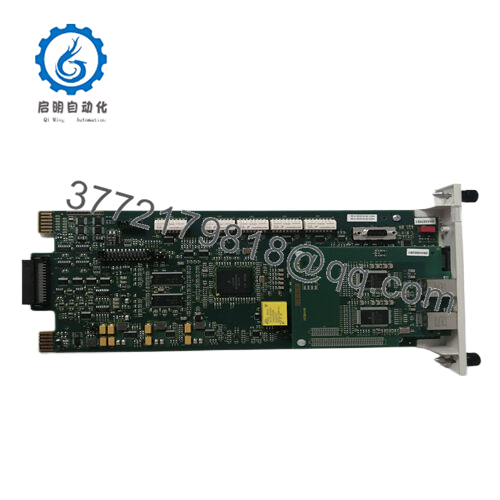
SPIET800
Within ABB’s sprawling Symphony Plus framework, the SPIET800 anchors the IET800 series as the indispensable envoy between INFI-NET’s deterministic domain and Ethernet’s expansive ether, a transfer module that transmutes serial-bound commands into IP-savvy streams for host dialogues. At its essence, it’s a protocol gateway with embedded firmware that encapsulates INFI-NET telegrams in TCP/UDP envelopes, polling controllers at 1 ms intervals while buffering up to 4 KB for bursty traffic—think of it as the bilingual butler, ushering field data to supervisory layers without translation tribulations. Its placement? Often in the communications rack, DIN-rail mounted alongside CIUs like the CI590, extending the INFI-NET highway via coaxial stubs to RJ45 ports for seamless cabinet-to-office spans.
Harmony is its hallmark: slots into Bailey INFI90/INFI90 upgrades or full Symphony Plus migrations, with auto-negotiation for 10/100 Mbps duplex that plays nice with VLAN-tagged switches. I’ve threaded it through a transitional setup in a Belgian brewery, where it federated legacy Net90 drops with Ethernet backbones, preserving cyclic scans while adding SNMP for network health pings. In a typical turbine control loop, the SPIET800 might ferry analog feedbacks from exciters to the host, its Modbus server mapping registers for third-party HMIs without custom code. ABB’s System 800xA tools configure it via drag-drop wizards, tuning timeouts and retries to match loop inertias—often trimming response from 200 ms to 20 ms in high-avail configs.
Yet its prowess peaks in resilient realms: supports redundant paths with master-slave failover under 100 ms, and its license model scales from basic bridging to encrypted tunnels for cyber-secure plants. Expandability? Cascade multiples for 256-node fabrics, with global time-sync via NTP for event correlation. A gas compressor station I audited leveraged it for remote telemetry, where its low-power Ethernet—under 5W—eased solar backups in off-grid pads. The SPIET800 integrates invisibly—not a disruptor, but the duct tape of the digital age, binding disparate dialects into a babel-free bandwidth that breathes life into aging automations.
Unveiling the SPIET800‘s guts reveals a blueprint for bridge-building brilliance: a 32-bit processor at 66 MHz, juggling 2 MB RAM for packet queues that hold 1000 frames, with Ethernet PHYs delivering full-duplex flows at 100 Mbps and INFI-NET transceivers hitting 1 Mbps serial without jitter. Fidelity? End-to-end latency under 10 ms, with 99.999% packet delivery via ARQ retries, per IEC 61784 profiles. Windfalls? In a UK wastewater hub, it unified disparate protocols, boosting data freshness for DO controls and trimming aeration costs by 7%. Build bonuses include a slim 25 mm width for crowded enclosures, and potting that repels 95% RH in steamy stills.
Sturdiness surges: MTBF surpasses 500,000 hours, with watchdog timers resetting hung ports in 50 ms, UL-listed for Class I Div 2 amid flammable fumes. Surge shields to 6 kV on LAN lines, and the 800 suffix flags RoHS for eco-edicts. Field frills: front-panel LEDs for link/activity diagnostics, and a serial console for CLI tweaks that debug without shutdowns. For hosts, its OPC-DA server exposes tags natively; in CIUs, it offloads polling to free controller cycles. Temp turf claims -20°C to 60°C, 2g shakes—substantiated in seismic retrofits where quivers query quits. Subtleties seal: VLAN support for segmented traffic, and a mere 4W sip that slims cooling needs. The SPIET800 enchants with efficiency—numbers nurturing nimbler nets, neater nodes, and the nectar of networks that navigate novelties without knots.
| Specification | Details |
|---|---|
| Protocol Support | INFI-NET to TCP/IP Ethernet (Modbus, OPC-DA) |
| Data Rate | Ethernet: 10/100 Mbps; INFI-NET: 1 Mbps |
| Latency | <10 ms end-to-end |
| Nodes Supported | Up to 32 per segment |
| Power Consumption | 4 W typical (24 V DC) |
| Operating Temperature | -20°C to 60°C |
| Isolation | 1500 V RMS Ethernet to INFI-NET |
| Dimensions (W x H x D) | 25 x 120 x 100 mm |
| Mounting | DIN rail |
| Certifications | CE, UL, RoHS, IEC 61784 |
| Buffer Capacity | 4 KB (1000 frames) |
| Weight | 0.3 kg |
| License Required | Yes (SSBIET800 series) |
Taming the SPIET800 into your Symphony fold is less labyrinth than ledger—logical steps yielding lasting links. Scout the comms bay—mid-height for access—with static safeguards; latch it to the rail till the clips catch, then snug the end-stops against rack rattles. Harness how-to: CAT5e for Ether drops, BNC for INFI-NET stubs—twist shields solo at the module, as I’ve slain crosstalk culprits from careless clamps in a buzzing boiler bay more than once. Rouse routinely: power bus, then boot jumper; status quartet—power, link, activity, fault—should serenade green in 5 seconds, signaling synergy.
ABB’s NetTool navigator eases entry—USB umbilical to upload underlays, or clone cohorts over LAN for legion loyalty. A keepsake from a foggy Finnish fiber plant: parity-probe the ports offline with loopbacks to prime protocols pre-plug. Nurturing? Nibble nodes quarterly for firmware freshness; optic audits bi-annum assay attenuation. In dusty distilleries, dust deflectors on vents deter drift. Key kindling? License loads via serial in 10 ticks—validate via ping, promptly. A pulse-quick pivot in a piping-hot poly reactor: mirror mode masked the mate, melding in 15 heartbeats. The SPIET800 repays the reasoned, rendering realms of radiant relay with the rhythm of routine rite.
Symphony sages scanning siblings spot ABB’s IET800 ilk in abundance—each edged for an era:
- INIET800: Legacy INFI90 forebear without Ethernet natives, for bare-bones bridges where the SPIET800‘s TCP/IP trumps.
- CI590: CIU companion with PROFIBUS punch, priming fieldbuses over the SPIET800‘s host handshakes.
- YSPIET800: Yielded variant for yield-focused yards, tweaking throughput unlike the SPIET800‘s standard stream.
- PSPIET800: Process-specialized spin with OPC UA, layering security atop the SPIET800‘s basics.
- RSPIET800: Redundant-ready relative for ringed resilience, doubling dips where the SPIET800 solos.
- CI522A: Analog I/O kin for signal sense, shifting scopes beyond the SPIET800‘s net nexus.
- BCU-12: Bailey control unit ally, augmenting arcs where the SPIET800 focuses on flows.

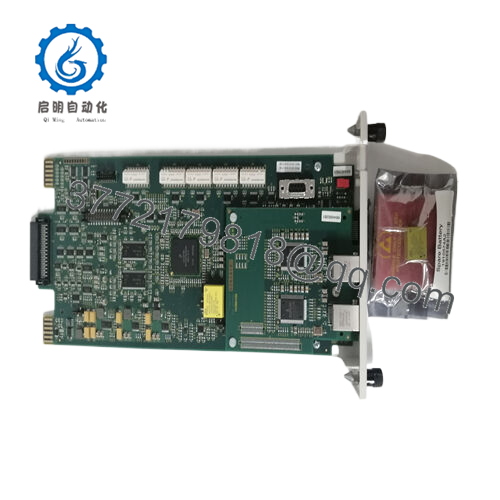
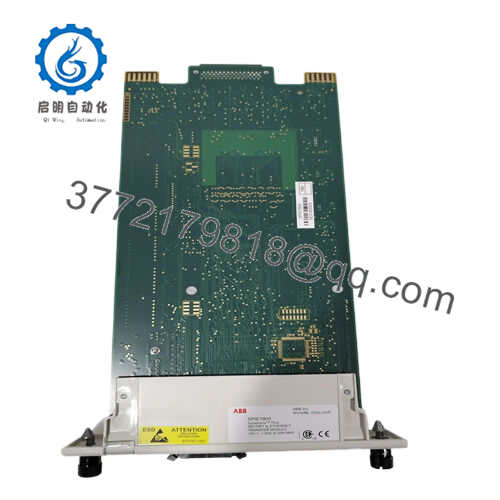
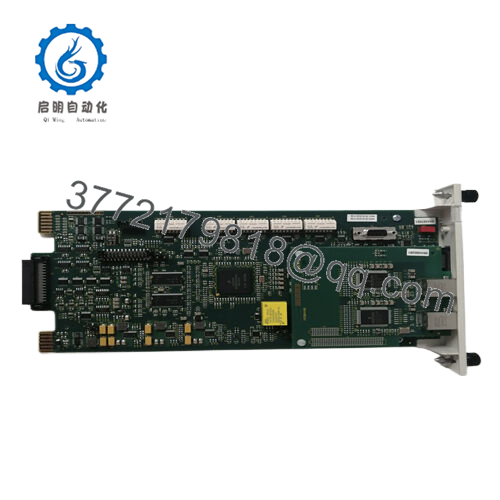
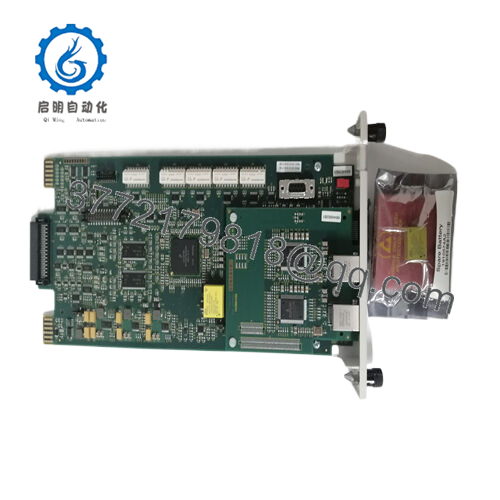
 WhatsApp: +86 16626708626
WhatsApp: +86 16626708626 Email:
Email:  Phone: +86 16626708626
Phone: +86 16626708626


